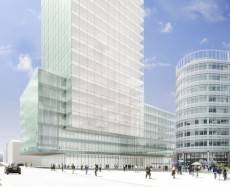February 19, 2014
Employment is on the rise but pay not matching the rate of inflation
 The latest labour market statistics shows employment has continued to rise, but at a slower rate than seen last month. However, at 67.2 per cent, record-breaking numbers of women are now in work, the highest since records began. The figures published today by the Office for National Statistics (ONS) show the employment rate in the three months to December 2013 rose to 72.1 per cent, lower than the previous three months and with just a small rise in total pay of 1.1 per cent. This slower pace of growth in employment and pay is reflected in the latest CIPD/ SuccessFactors quarterly Labour Market Outlook survey, which reveals that, although recruitment intentions remain positive, the rate of increase has slowed significantly and the vast majority of organisations expect to give pay awards below the current rate of inflation. (more…)
The latest labour market statistics shows employment has continued to rise, but at a slower rate than seen last month. However, at 67.2 per cent, record-breaking numbers of women are now in work, the highest since records began. The figures published today by the Office for National Statistics (ONS) show the employment rate in the three months to December 2013 rose to 72.1 per cent, lower than the previous three months and with just a small rise in total pay of 1.1 per cent. This slower pace of growth in employment and pay is reflected in the latest CIPD/ SuccessFactors quarterly Labour Market Outlook survey, which reveals that, although recruitment intentions remain positive, the rate of increase has slowed significantly and the vast majority of organisations expect to give pay awards below the current rate of inflation. (more…)
























February 10, 2014
Architects should accept that other people do have a right to an opinion
by Mark Eltringham • Architecture, Comment, Facilities management
All professions tend to wallow in a mire of their own existential angst, perpetually complaining that they are misunderstood, undervalued and misrepresented. But any members of the human resources, facilities management or other professions which come across as habitually concerned about their role, public image, direction or esteem in which they are held might want to contrast their situation with that of the UK’s architects. This is a profession that wrestles not only with the common professional gripes, but also with what it perceives as a fall from public grace coupled with falling fees and complete disdain for what muggles – non-architectural folk – think. And all in a country in which literally anybody is allowed to design buildings.
(more…)